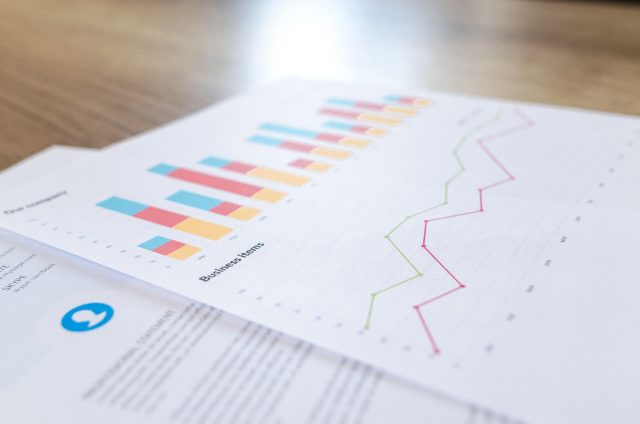
When starting a new stock investment, it is important where you collect information from. If you do not make investment decisions based on reliable sources of information, it will be difficult to make profits, and there is also the risk of large losses.
Nonetheless, there are countless sources of stock investment information in Japan alone, and identifying high-quality information sources can be a daunting task. Therefore, why not start by referring to the quarterly report, which is also called the bible of stock investment and is trusted by many investors.
However, the volume of quarterly reports is large, so for those who are just starting to invest in stocks, it will be difficult to master without a guide.
Therefore, in this article, we will explain in detail the outline of the quarterly report, which is an important source of information for stock investment, how to read it, and points to note.
table of contents- Quarterly report is the bible of stock investment
- Difference between information collection and quarterly report in virtual currency
- Explanation of how to read the quarterly report for each item
- Quarterly reports are used to understand micro and macro trends
- Become an investor who can master the quarterly report and read the market
1. Quarterly report is the bible of stock investment

Shikiho (company quarterly report) is an information magazine published by Toyo Keizai Inc. that summarizes the stock prices and business performance of listed companies. There are more than 3,700 listed companies in Japan, but each company has a person in charge who constantly checks their movements when preparing the quarterly report. Therefore, it has an overwhelming amount of information and comprehensiveness, and is also called the bible of stock investment.
Of course, there are several information magazines other than the quarterly report that summarize information on listed companies and investments, but only the quarterly report provides forecasts for two terms. It is also advantageous when investing in individual stocks because it gives you a more forward-looking perspective.
Quarterly forecasts are used as a reference by financial institutions and overseas investors to confirm the performance of Japanese companies. Therefore, if you start investing in stocks, it is essential to know how to read the quarterly report, its characteristics, and how to use it.
1-1. Basics of quarterly reports published four times a year
Quarterly reports are published four times a year.
- New Year issue
- Spring issue
- summer issue
- Autumn issue
The New Year issue will be published based on the information on the interim financial results in September. The information for this term is coming out, and we can predict the landing point such as roughly how much sales will be generated and how much operating income will be.
Some companies will start to outperform or underperform the sales and profit forecasts made at the beginning of the period, so you will likely find some surprise stocks.
The spring issue will be published after the financial results for the third quarter (October to December). The feature of the spring issue is that it touches on the forecast for the next fiscal year, not just for the current fiscal year, when most of the financial information is available. It will help you to find promising stocks ahead of time.
The summer issue will be published in June. It covers the results of the previous fiscal year’s financial results, and the reporter leaves comments from a neutral standpoint based on that.
The fall issue is based on the first quarter results from April to June. Three months have passed since the start of the new period, and some companies have started to show results that are far from the forecasts in the summer issue, so we can gradually see surprise forecasts.
1-2. There is a paper version and an online version
By the way, the Quarterly Report has a paper version and an online version.
Stock prices, corporate performance, and market trends change daily. It is always desirable to be in touch with the latest information, but since the print version of the Quarterly Report is only issued four times a year, it is not always possible to keep the information fresh.
In that respect, with “Shikiho Online”, it is possible to always obtain the latest information provided by the editorial department of the Shikiho. You can also read the back numbers of quarterly reports issued in the past, so the amount of information is perfect.
It has a search function and can be linked to a smartphone app, and by combining it with the 2,000-page paper version of the quarterly report, the efficiency of information collection will increase.
Even free members can use Shikiho Online’s convenient functions, but if you become a paid member, the number of stocks that can be registered and the functions that can be used will increase significantly. You can also use the service to see information in advance before the publication of the paper version of the quarterly report, so it is an attractive service for those who are serious about investing in stocks.
2. Difference between information collection and quarterly report in virtual currency

Next, I will compare and explain how information gathering using quarterly reports differs from virtual currency.
Virtual currency mainly collects information using the Internet, such as Twitter, Discord, and official websites where information can be obtained in real time.
There is a lot of information that can be searched on the internet even for stock investment, but the bible “Four Seasons Report” is still used as of 2023. There are some differences between researching on paper and researching online.
The main differences in collecting information from virtual currency are the following four points.
- Does not represent real-time company performance
- Read relevant parts efficiently
- not always predictable
- Don’t skip the headlines
Let’s take a closer look at the differences between each.
2-1.It does not represent the company’s performance in real time
The information contained in the quarterly report is basically the company’s performance three months prior to the time of publication. Note that it does not reflect real-time company performance.
For example, the summer issue published in June looks at corporate performance, which will be published in March. Of course, the information is informative, but it does not represent the current state of the company.
If you want to accurately grasp the current situation, look at charts and economic news, and collect information accordingly.
However, in the case of Quarterly Online, the above does not apply.
2-2. Efficiently read relevant parts
As mentioned above, quarterly reports are information magazines with a very large volume.
Therefore, when reading the quarterly report, it is important to devise a way to read it, such as reading through the relevant or important parts first. If there is a company or industry that you are interested in, it would be nice to focus on that part.
The quarterly report covers 2,000 pages, so it is not realistic to read all of them.
The key is to pinpoint the information you need. Once you get used to reading quarterly reports, gradually expand the range of information you collect.
2-3. Expectations are not always correct
No matter how reliable the information magazine is, quarterly reports do not always predict the future of stocks and industries.
The Quarterly Report has a comment column where the reporter’s predictions about stocks and markets are written. This is just a guess, so of course we don’t recommend taking that information with a grain of salt.
In fact, it is also known that it greatly exceeded the predictions written about Toyota in the 3rd Quarterly Report of 1950.
The information obtained from the quarterly report can be used as a reference, but please use it only as a reference, and make the final decision after confirming the trends of the company and the market by yourself.
2-4. Do not skip the headline
The main part of the quarterly report is the page that summarizes the detailed information about the company, but the headline at the beginning of the report is surprisingly important.
For example, at the beginning of the book there is a topic “[Headline]Performance trends seen in rankings”. This topic lists the headline rankings of five issues, including the past four issues, from 1st to 15th.
Stock prices often move in response to future expectations and expectations.
If there are many positive words such as “upper”, “dividend increase”, and “maximum profit” in the headline, there are many cases where the stock price is already high, and there is a risk of overestimating the price.
On the other hand, if there are many words such as “large profit drop”, “continuous drop”, and “deficit”, it is possible that the stock price is close to the bottom price, and then it may lead to positive words such as “rapid rebound” and “blackening”. Therefore, you are more likely to own it at a lower price.
However, beware of companies with a high bankruptcy risk, such as having excessive debt or having a deficit for more than three years.
In addition, the “Earnings forecast by industry” at the beginning of the report summarizes future sales, operating income, and forecasts for the next fiscal year by industry. Industries with a positive year-on-year increase/decrease rate are written in red, so you can judge at a glance which industries are doing well.
3. Explanation of how to read the quarterly report for each item

The page with company information is divided into 12 blocks, including company information, shareholders, financials, dividends, and charts. With so much information out there, it’s not easy to figure out how to gather information efficiently.
Next, we will explain how to read the quarterly report for each of the following items.
- About us
- stock price and dividend
- Future expectations of the company
- finance condition
- Past Stock Price and Capital Movements
For each item, let’s see where to focus from among the 12 blocks.
3-1. Company Information
Investing in individual stocks requires an understanding of the company you are investing in. Get a grasp of basic information such as the type of business, business content, and company size.
To understand the company information, please check the items of “Industry”, “Company Name/Business Description/Address”, “Employees”, “Supplier” and “Business Partner”. You can estimate the size of the company from the industry, average age of employees, and average annual income.
If you also know the information of suppliers and business partners, you can check what kind of company you have a relationship with, and you can get elements to estimate the stability of earnings.
3-2. Stock price and dividend
To see the stock price, look at the stock chart at the top of the page. See how stock prices are changing in response to demand and supply and performance.
However, as mentioned above, it does not reflect real-time information, so it is necessary to collect the latest information on your own.
In addition, the “Dividends” section lists the amounts received or received by the shareholders. If you want to practice an investment style aiming for income gain, the information on the amount of return to shareholders in this section will be useful.
3-3. Future expectations of companies
The company’s future forecast can be confirmed from “performance figures” and “performance articles / material articles”, which can be said to be the biggest feature of the quarterly report.
Performance figures are original forecasts based on interviews with industry reporters. Sales, operating profit, net profit, etc. are listed and explained in the performance article. Material articles are items written about corporate management issues and new products based on market trends.
You can also check the “expected PER” from the stock index. PER indicates how many times the stock price is more than the net profit per share. PER is an index that indicates whether the stock price is undervalued or overvalued, and in general, the lower the PER, the more undervalued the stock.
However, these are only predictions.Collect information by adding comments to the judgment material
Ultimately, it is important that you make your own decision.
3-4. Financial situation
Use the “Finance” item to understand whether the company is operating safely and whether it has future potential. In this item, you can check not only the total assets of the company, but also the total amount of equity capital that does not need to be repaid and interest-bearing debt that needs to be repaid with interest, giving you comprehensive information on the business situation of the company.
At this time, it is recommended to check “ROE” as well. ROE is the return on equity, which is calculated as “net income / equity x 100%”, and the higher the ROE, the more effectively the equity capital is used to generate profits.
In addition, the item of “cash flow” is also one of the indicators that can grasp the financial situation of the company. If the operating cash flow through the entire operating activities from purchase to sales is negative, there is a possibility that the expenditure exceeds and the business performance is not good. Capital investment and upfront investment may result in a temporary negative impact, but be careful if the negative trend continues over the long term.
3-5. Past Stock Price and Capital Movements
You can see the past stock price movement by looking at the stock price trend. Seeing highs and lows and comparing them to stock charts can help you decide if a stock is worth investing in.
Stock split, stock consolidation, capital increase, etc. can be checked from the “capital change” item. This is an item that cannot be overlooked because capital changes can affect the stock price, such as a decrease in stock price due to a capital increase or an increase in stock price due to the cancellation of shares.
4. Use quarterly reports to understand micro and macro trends

By using quarterly reports, you can not only look at individual stocks and individual company performance from a microscopic perspective, but also from a macroscopic perspective, such as making predictions by looking at trends in the market as a whole.
We will focus on the following two points to explain how to use quarterly reports to understand micro and macro trends.
- find undervalued companies
- Find companies and industries with growth potential
Let’s see how each can be used.
4-1. Find a company with a cheap stock price
The basic principle of stock investing is “buy low, sell high”. To do that, you’ll need to find companies with undervalued stocks.
Quarterly reports contain expected PER and actual PER, which is useful for discovering companies with undervalued stock prices. Note that the average PER level varies depending on the industry (sector).
Projected PER is the projected PER for two periods. For companies that are expected to grow in the future, the expected PER in the second period tends to be lower. However, use the numbers only as a guide, and make decisions on whether to invest based on market trends and comparisons with competitors.
On the other hand, the actual PER shows the PER for the past three periods as “average high price” and “average low price”. It represents the average of the highest PER and the average of the lowest PER for the past three periods, respectively. If the expected PER is close to the average high price, it is close to selling, and if it is close to the average low price, it is considered an opportunity.
4-2. Find companies and industries with growth potential
Performance and stock prices are often linked, and stocks with rising sales and operating income are promising. Even if the P/E ratio is already high, the stock could continue to rise in the future.
Let’s check whether sales are growing year by year by looking at the performance items and comparing them with past performance.
In addition, performance articles and materials articles that predict market movements and future company performance are also useful for finding companies and industries that are expected to grow.
5. Become an investor who can read the market by mastering quarterly reports
It is very important to collect correct information when starting stock investment. There are many sources of information on stock investment, but the Quarterly Report has an overwhelming amount of information and is comprehensive enough to be used by financial institutions and overseas investors to confirm the performance of Japanese companies. Therefore, if you want to make a profit from stock investment, it is essential to master the quarterly report called “the bible of stock investment”.
However, the quarterly report is a huge amount of information, and it will be difficult for those who start investing in stocks to use it without prior knowledge. Please refer to the contents of this article and use it to make predictions about companies with cheap stock prices and companies and industries that are expected to grow.
The post How to use the bible “Quarterly” of stock investment that even beginners can understand appeared first on Our Bitcoin News.

 2 years ago
123
2 years ago
123














 English (US) ·
English (US) ·